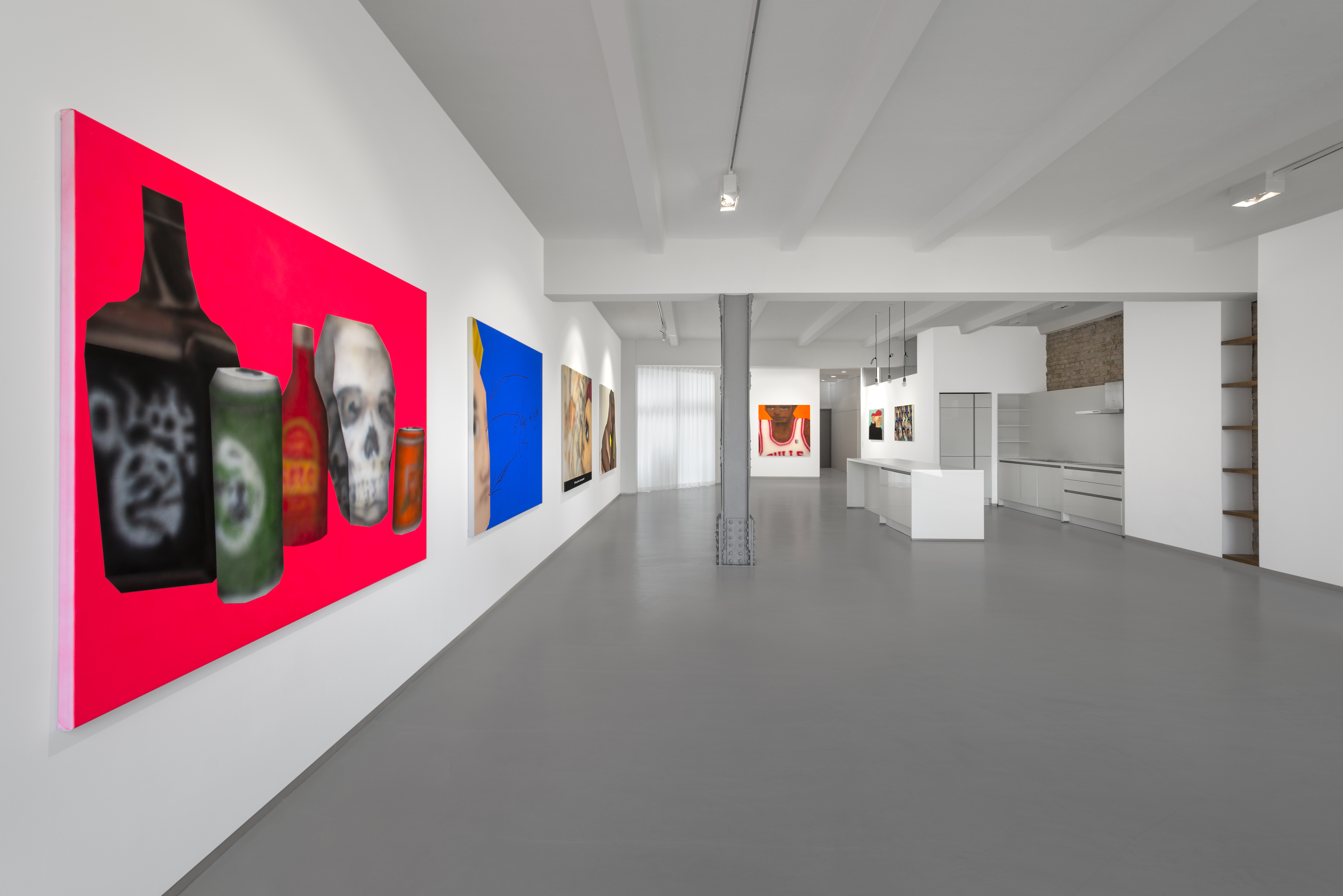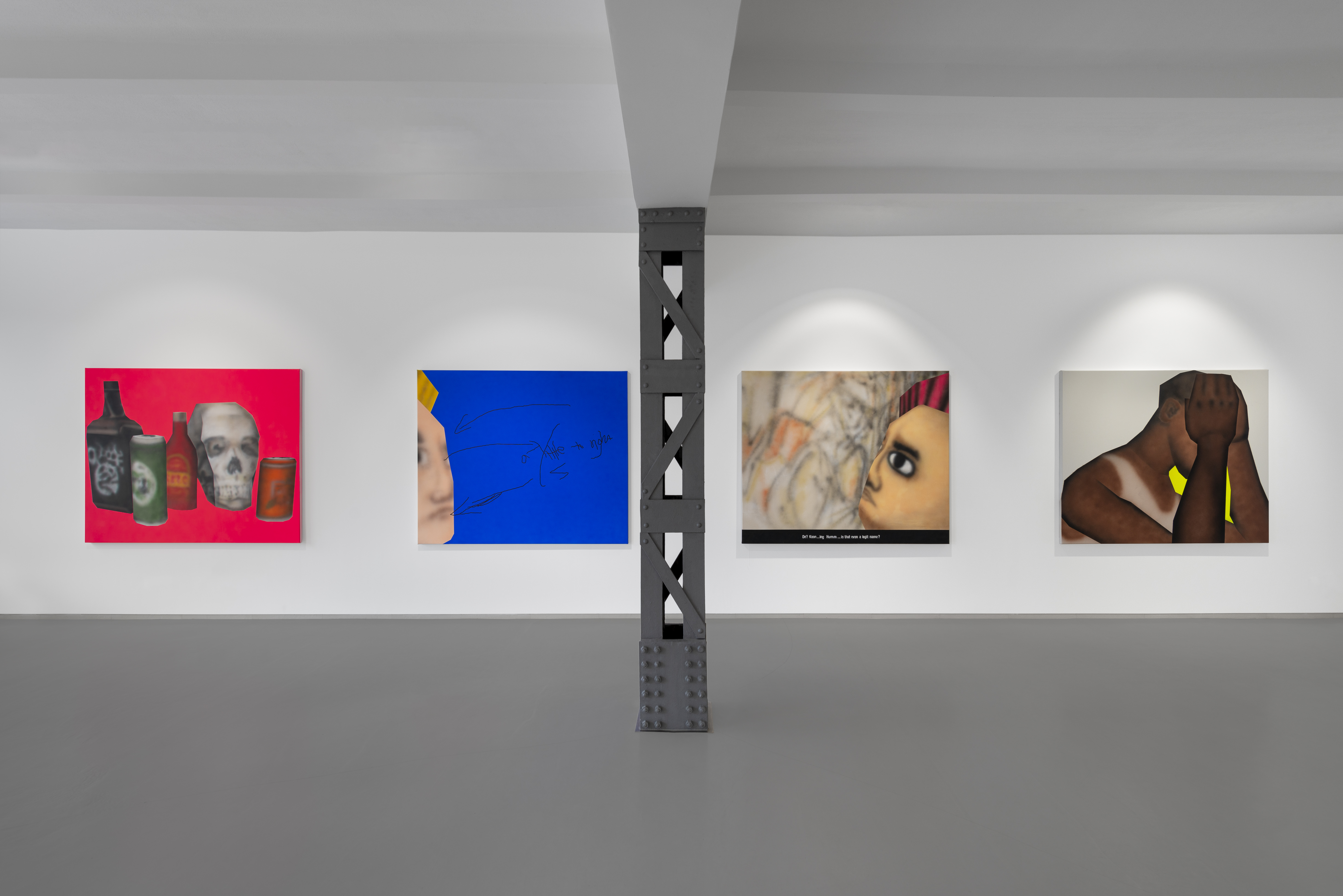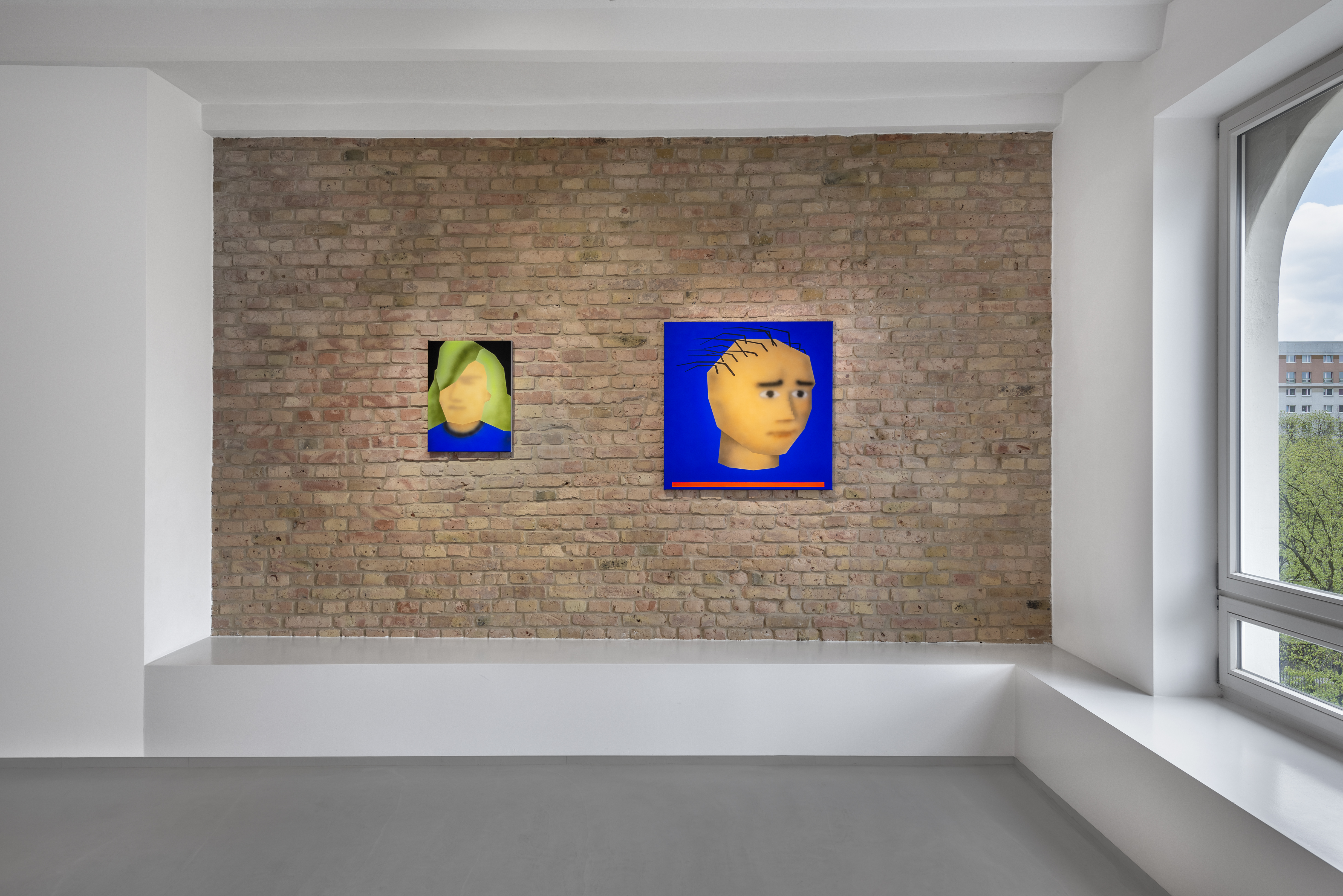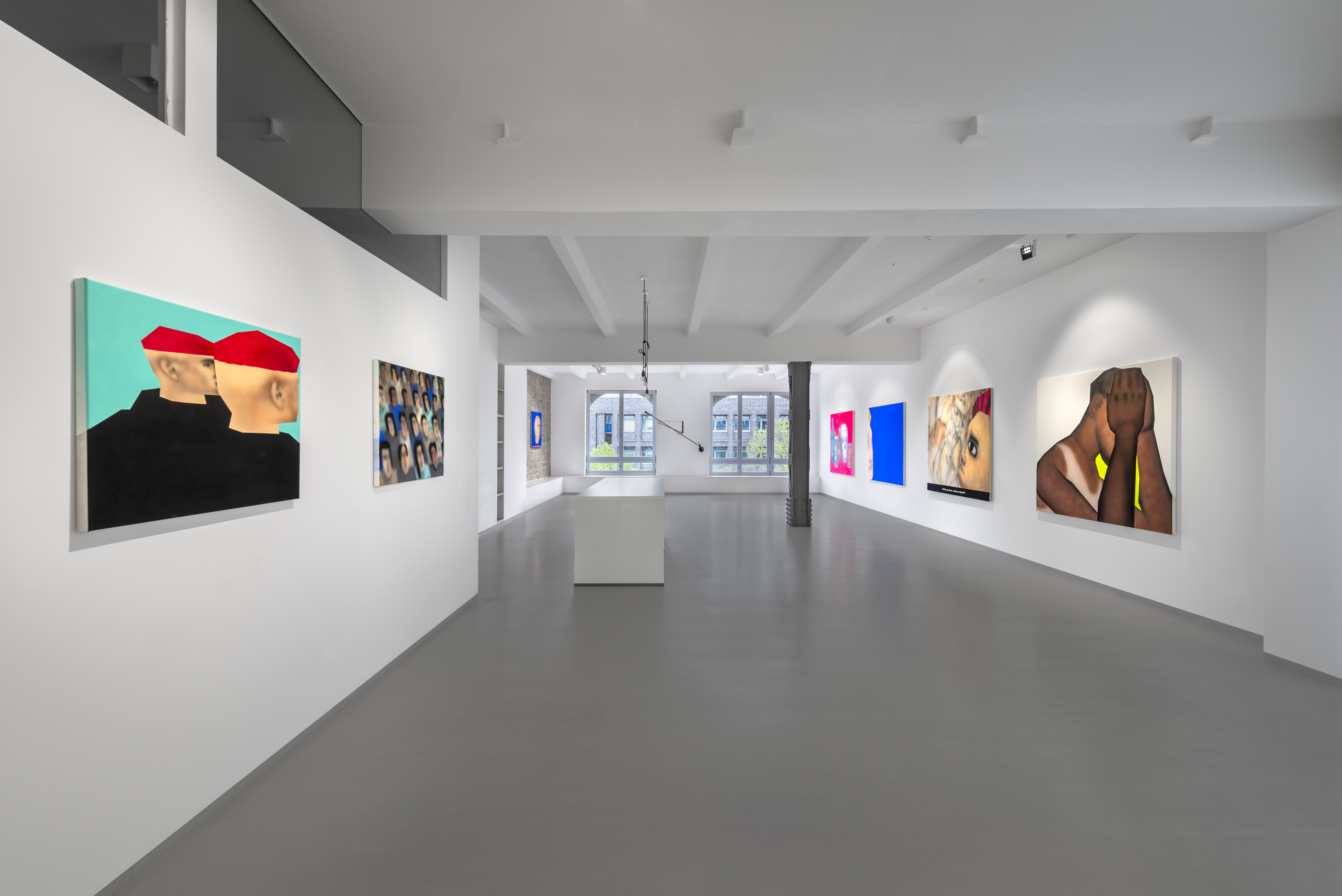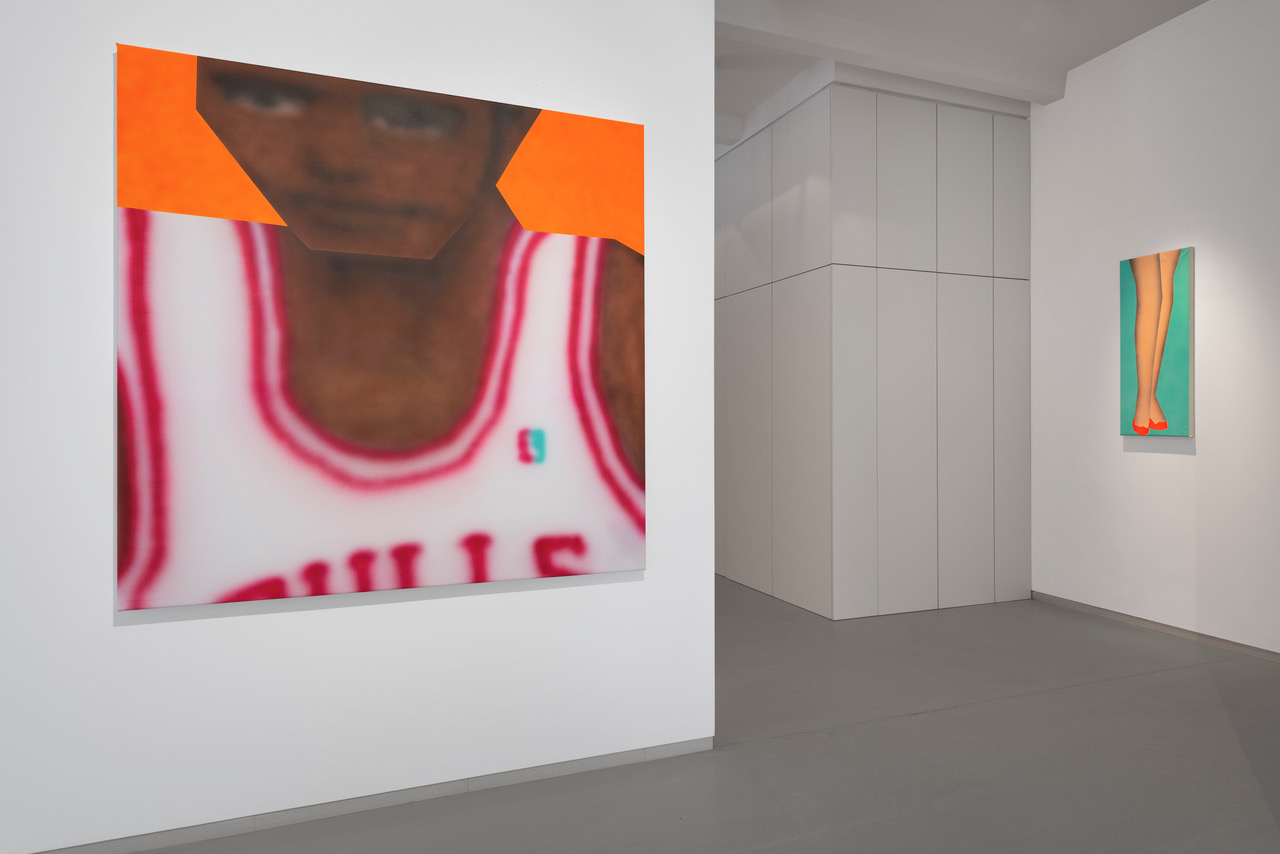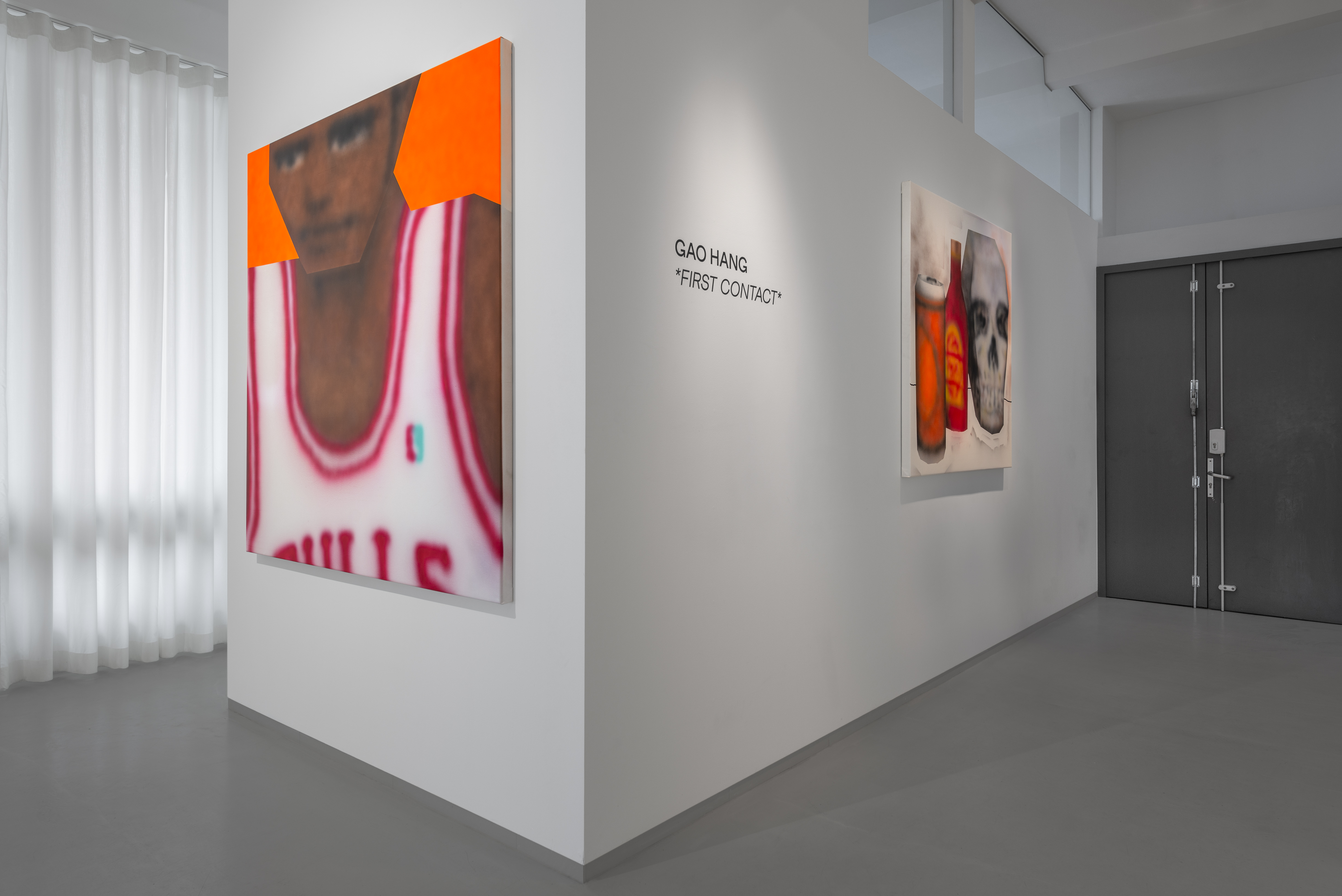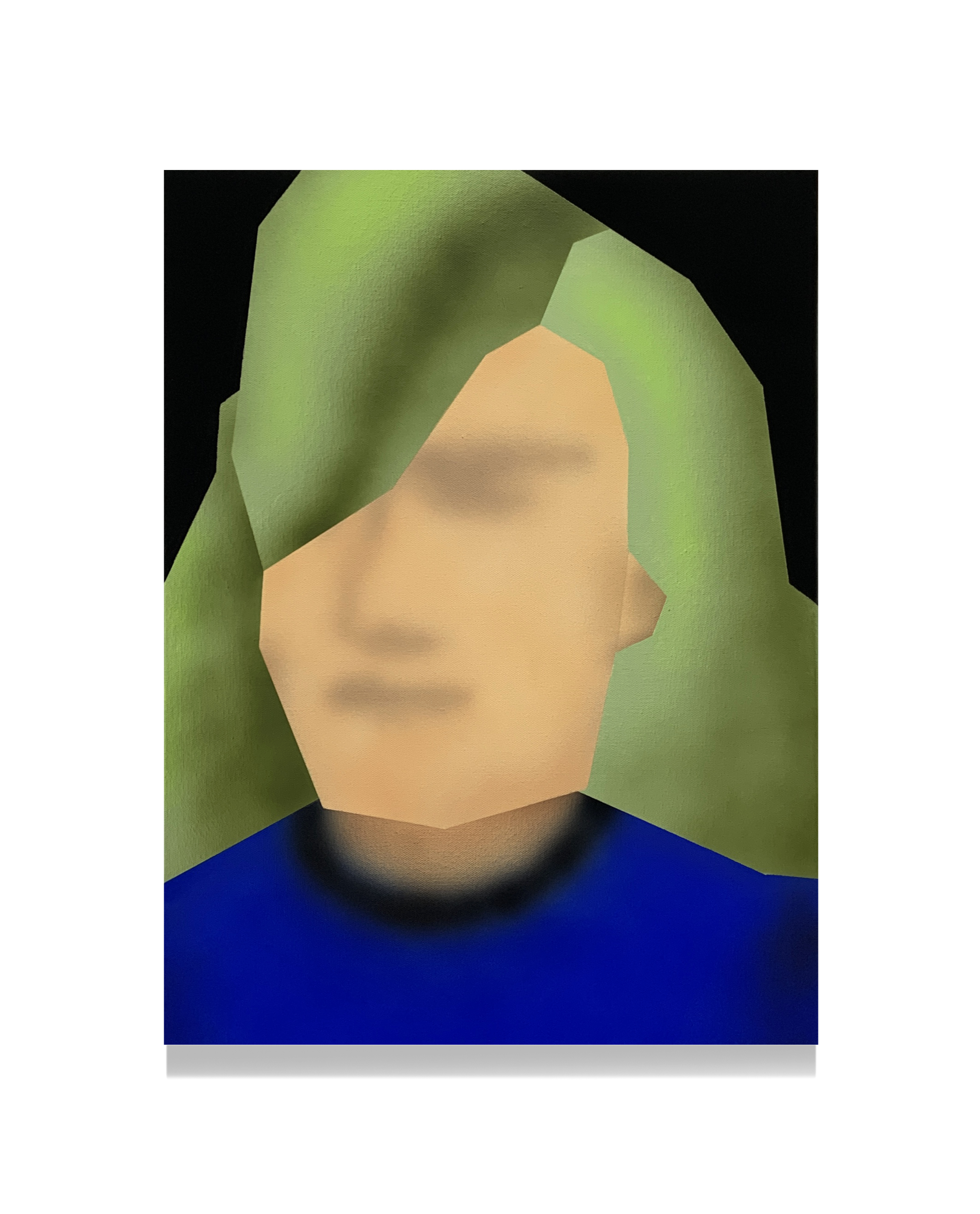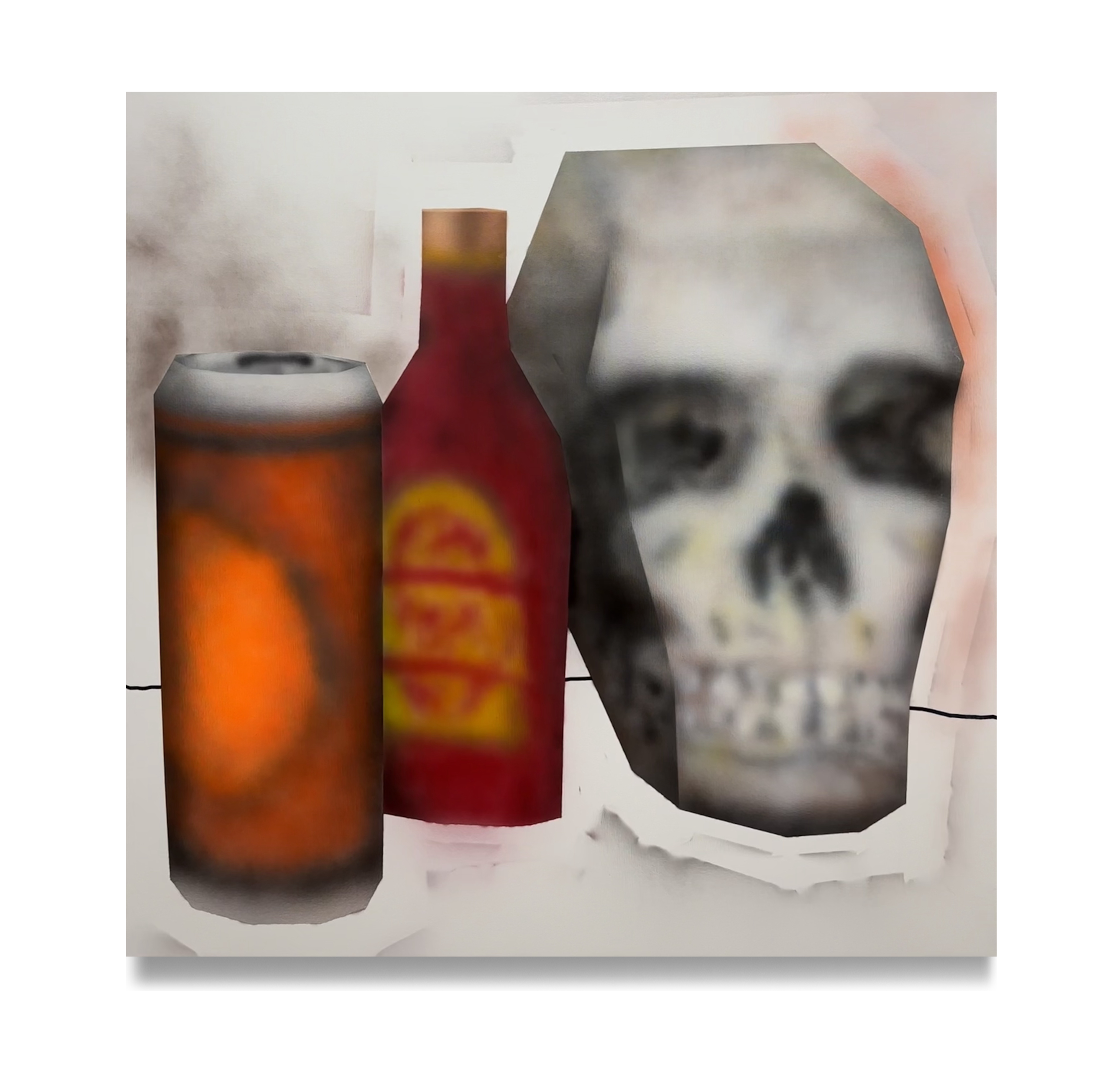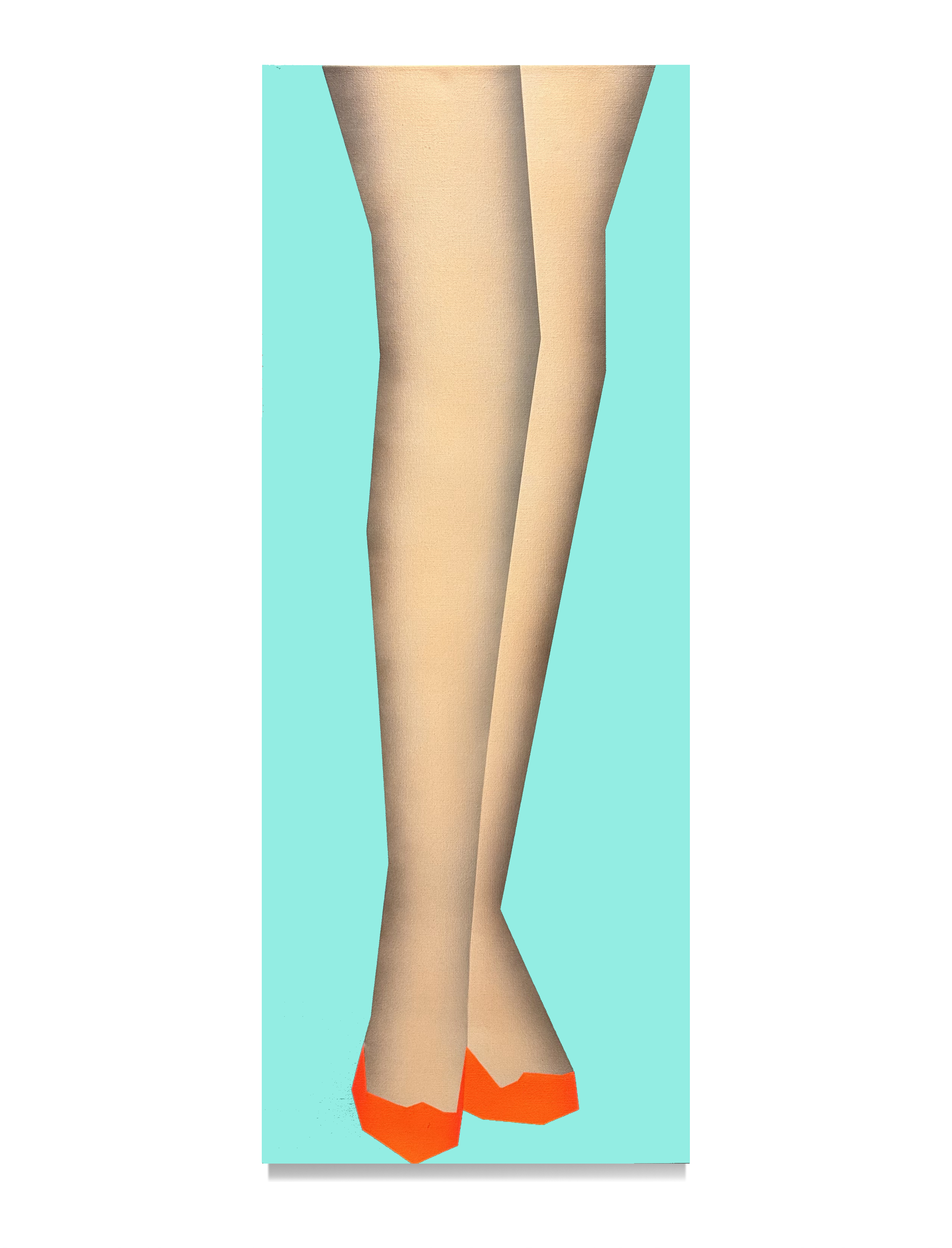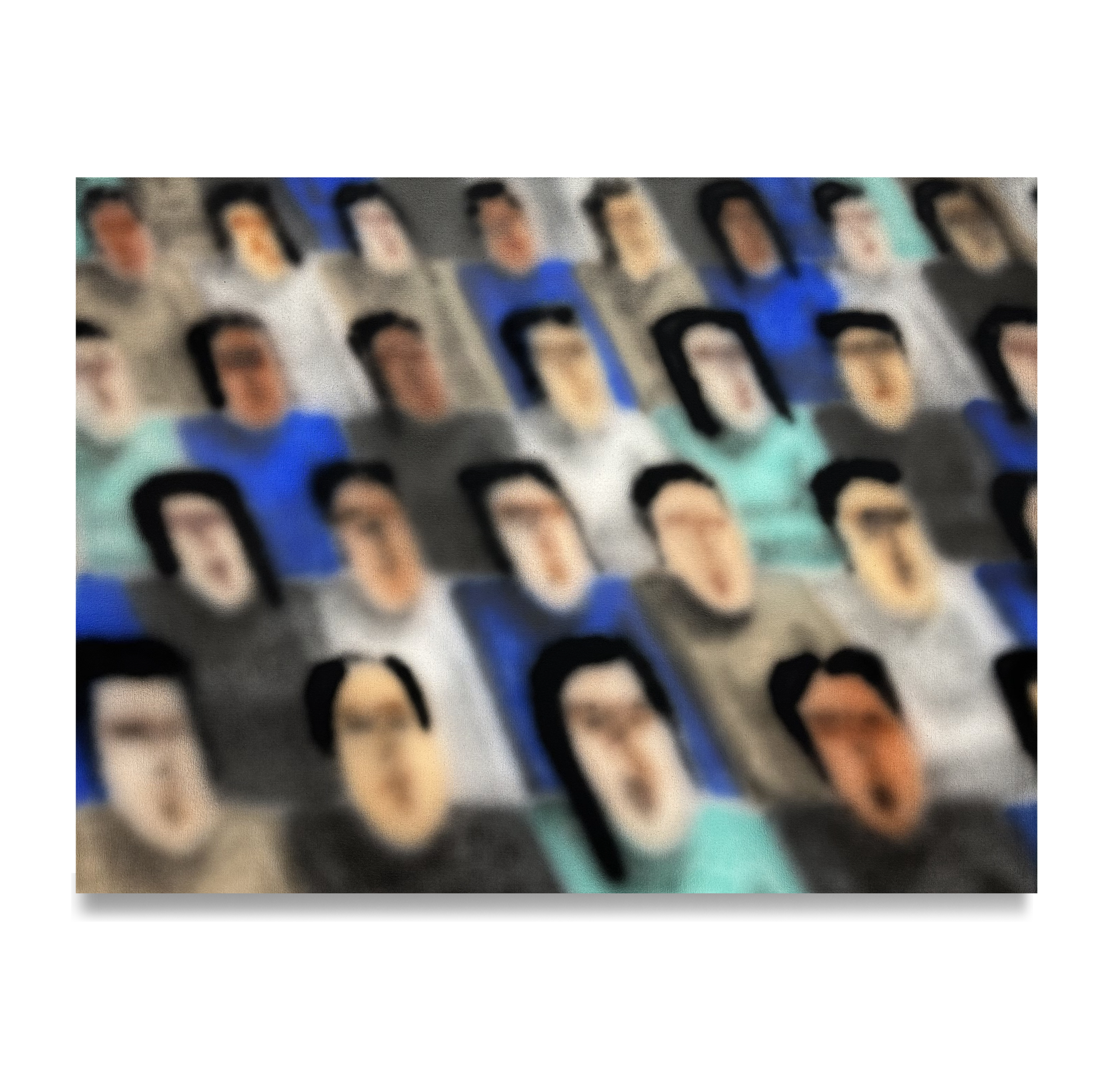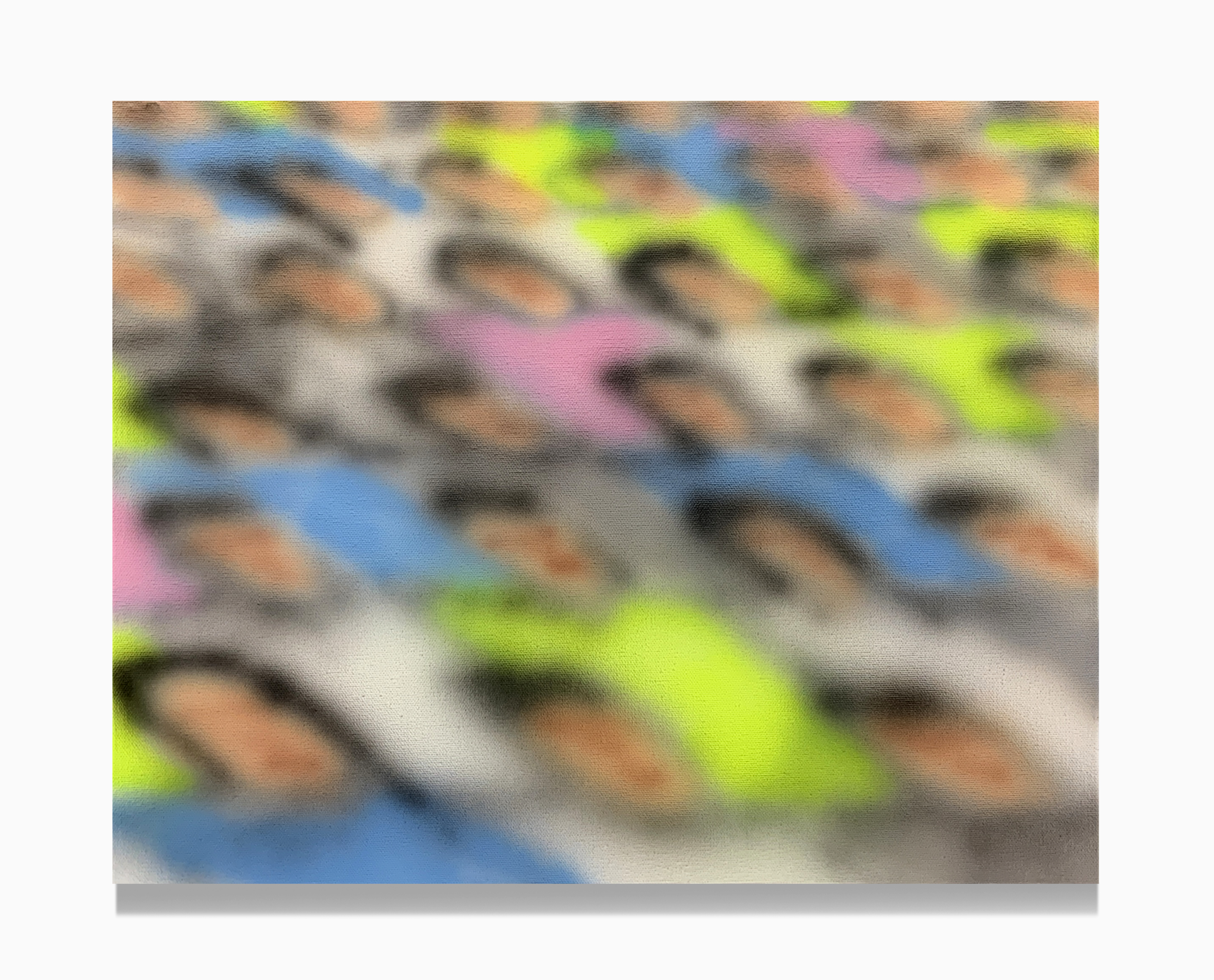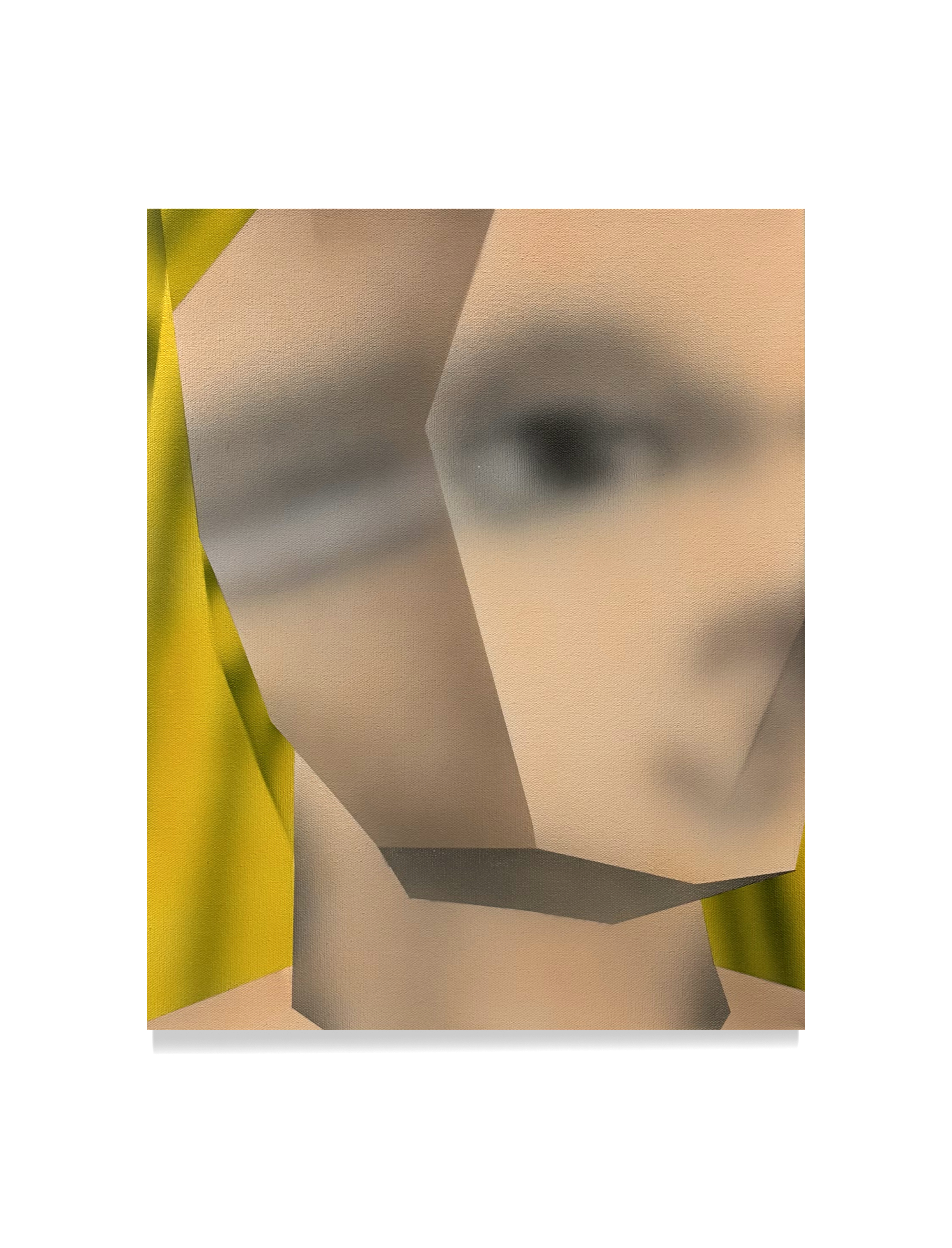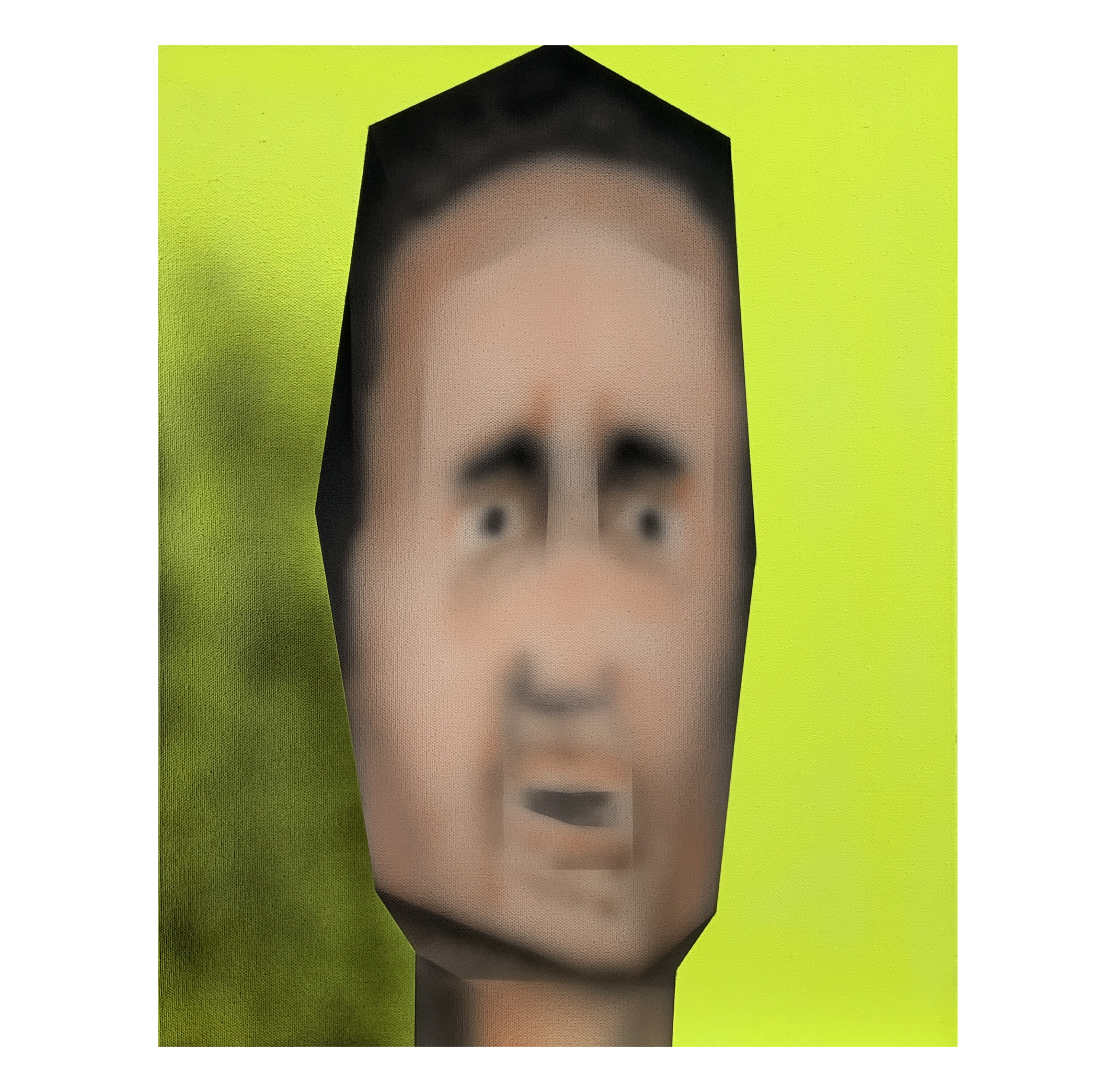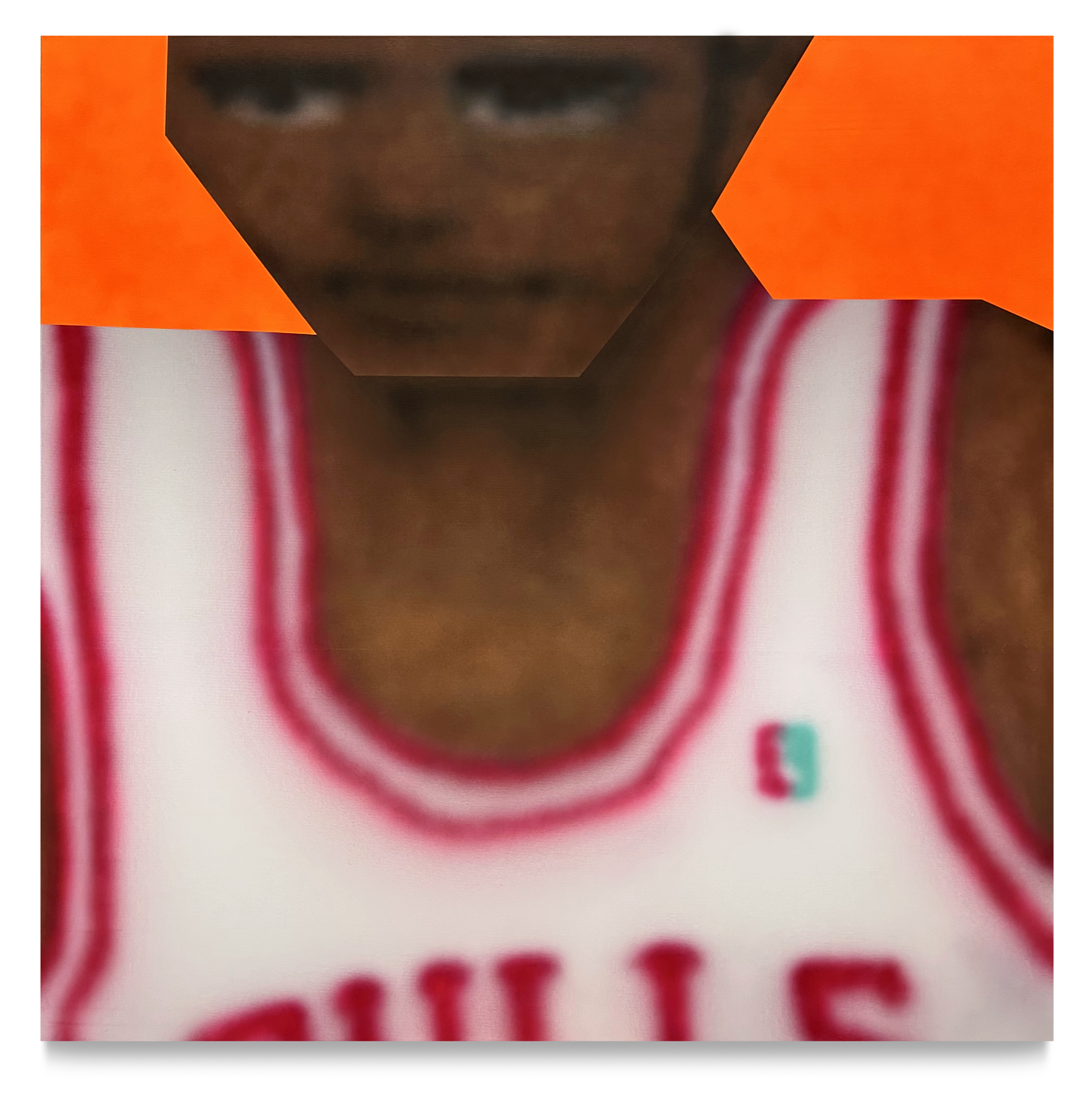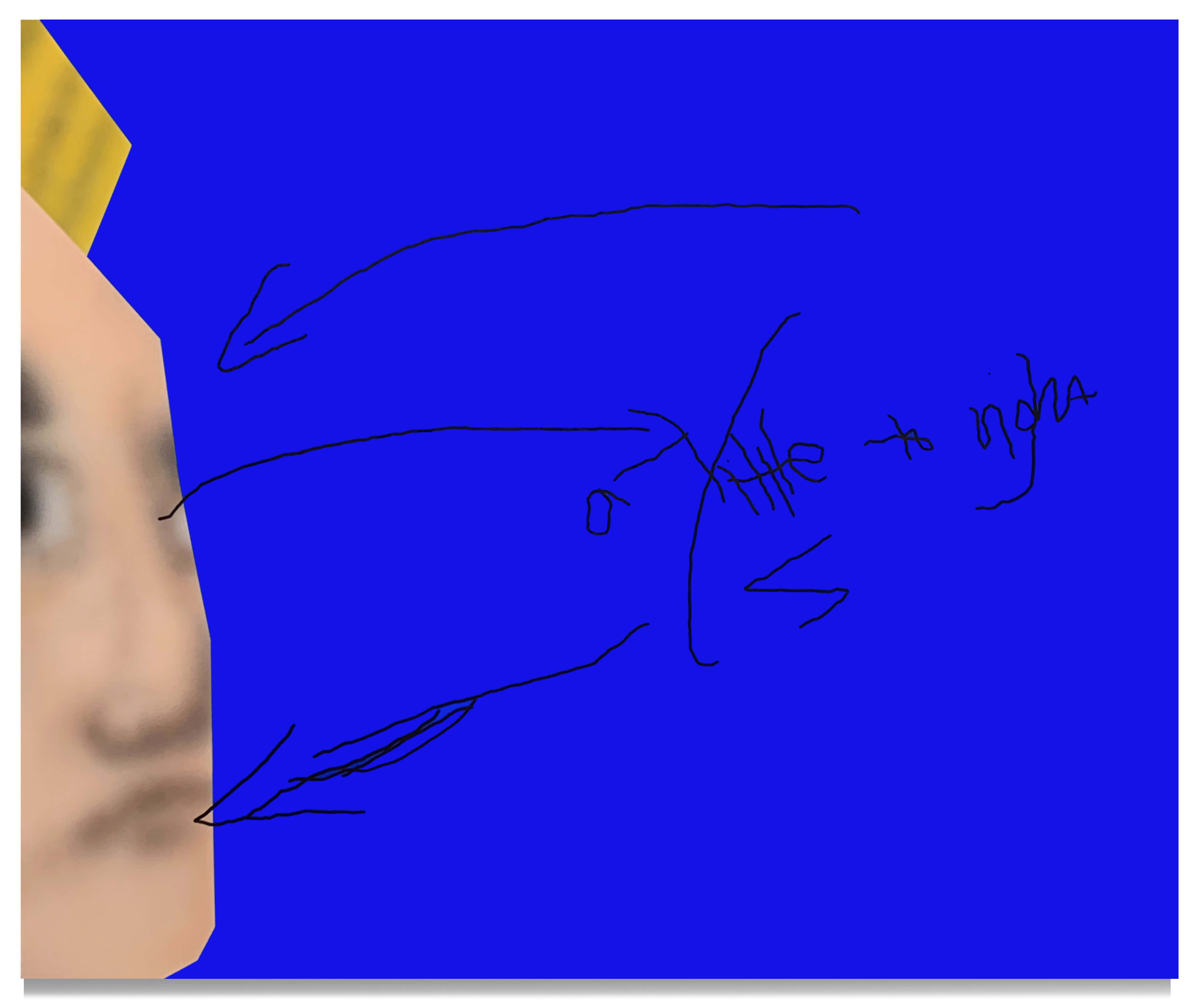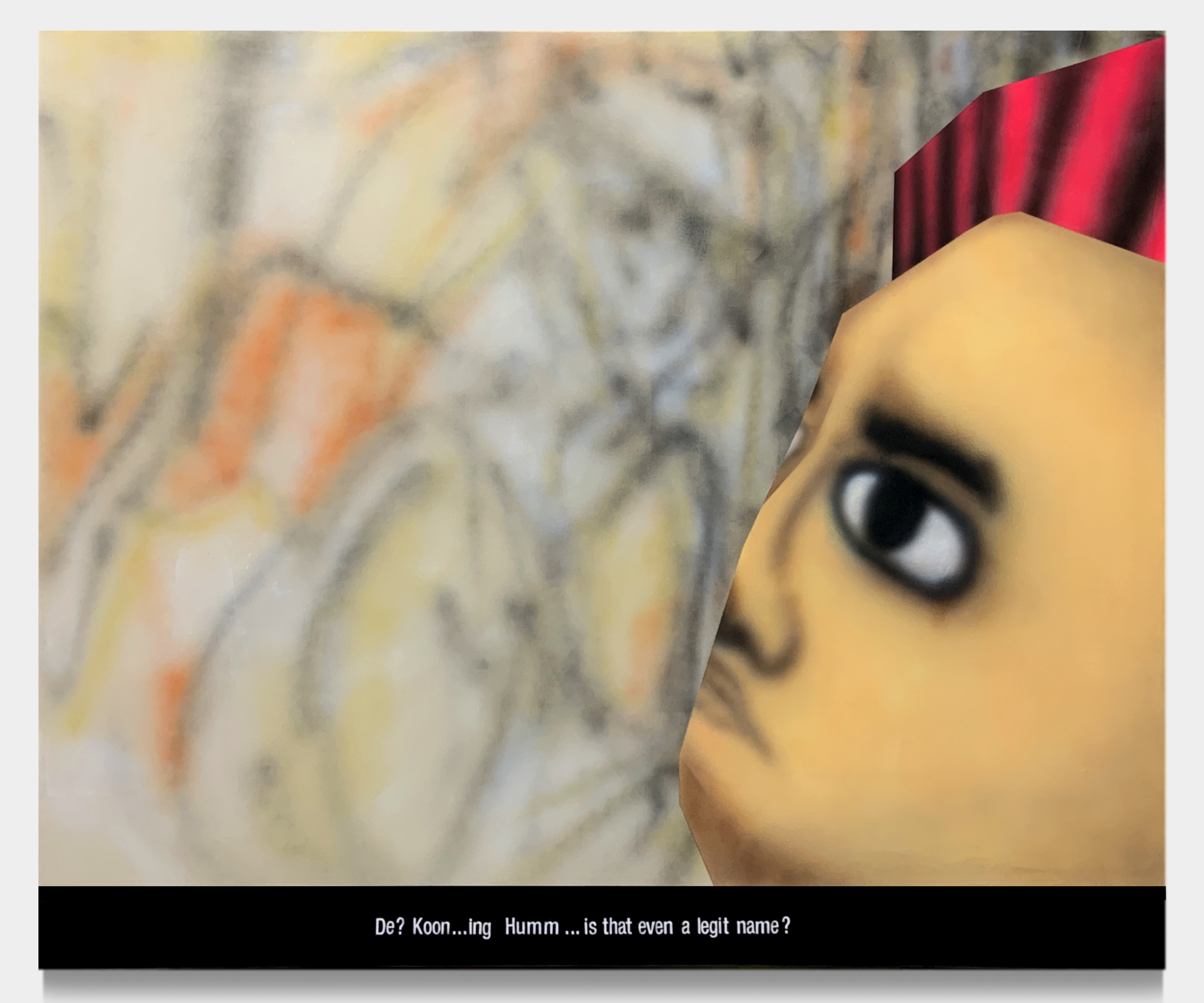GAO HANG
IMAGES
INFO
Gao Hang “What could be the traditional painterly aspect of airbrush as a medium?” “Can I approach traditional painting with the rules set by the 90s video game graphics?” These are sort of questions that Gao Hang is busy with. Looking at the art history timeline, one will notice a certain pattern in the way the works are conceptualized, as well as a momentum that keeps this timeline going - important ideas sprouting as reactions to the rules of traditional academic painting within their Zeitgeist setup. And holding onto the impact that his first experience with 3D space on a computer screen had on him, the Chinese-born, Houston-based artist is developing a seemingly simple but highly conceptualized body of work that is enhancing the painterly art history.
"It's also something about the age - I'm 32 so I sort of know who I am, and before, I wouldn't know that," Hang explains what is backing up his resolute conviction that the raw, chunky, sharp-edge, badly mapped-out aesthetics of late 90s video games can indeed be used a symbol of this moment in time. It was his move from China to the US decade-ish ago that helped him understand he is not only a world person but even more, an Internet person. Landing in the most diverse city in the US, a completely new environment, he quickly realized that he shares the same interests as anyone else since the Internet completely removed the notion of cultural shock. Being highly familiar with preceding artistic movements, this realization prompted the concepts, approaches, and body of work that is documenting the formative impact of computer graphics on the generation at the turn of the century. Reacting to art history and its momentum through a prism of once cutting-edge technology that now feels like a primitive, outdated concept, the work is meant to have a similar impression that archeologists might’ve experienced when looking at the cave paintings, or when Rauschenberg saw a car tire.
Following critical thinkers such as Dave Hickey or Clement Greenberg, the reference images are raw screenshots from existing video game walk-throughs (Golden eye 007, Hard time - McDickies, Tomb raider III, NBA LIVE 98, Counter strike 1.5, GTA 3), but never his own model made for the purpose of recreating in painting. Not interested in remaking something done in another media, Hang is strict about his imagery being their own thing, inspired by the existing concepts, but rearranged, rethought, and reappropriated for his chosen format or media. "For me, when I see early 21st-century video games, they're like landscape - nobody owns landscape, it's just there," he mentions, explaining the idea of using digital imagery as "found objects" slippery to outdated copyright laws. The chosen visuals can also not be too interesting, ridiculous, funny, or descriptive on their own, cause that will always be their main and most prominent characteristic. This is the problem that the artist sees in carrying existing visuals onto a canvas for the sake of turning them into a painting, which by itself is an individual thing and can't be a meme or a screenshot reproduction. Instead, the ones with great potential to be blown up onto a large-scale canvas are selected, with their compositional or structural quality in mind. Similar to Alex Katz's approach to creating work that isn't as simple as it's reductive, the images are as universal as they are foreign, and the characters can be someone as much as they're anyone.
"It's also something about the age - I'm 32 so I sort of know who I am, and before, I wouldn't know that," Hang explains what is backing up his resolute conviction that the raw, chunky, sharp-edge, badly mapped-out aesthetics of late 90s video games can indeed be used a symbol of this moment in time. It was his move from China to the US decade-ish ago that helped him understand he is not only a world person but even more, an Internet person. Landing in the most diverse city in the US, a completely new environment, he quickly realized that he shares the same interests as anyone else since the Internet completely removed the notion of cultural shock. Being highly familiar with preceding artistic movements, this realization prompted the concepts, approaches, and body of work that is documenting the formative impact of computer graphics on the generation at the turn of the century. Reacting to art history and its momentum through a prism of once cutting-edge technology that now feels like a primitive, outdated concept, the work is meant to have a similar impression that archeologists might’ve experienced when looking at the cave paintings, or when Rauschenberg saw a car tire.
Following critical thinkers such as Dave Hickey or Clement Greenberg, the reference images are raw screenshots from existing video game walk-throughs (Golden eye 007, Hard time - McDickies, Tomb raider III, NBA LIVE 98, Counter strike 1.5, GTA 3), but never his own model made for the purpose of recreating in painting. Not interested in remaking something done in another media, Hang is strict about his imagery being their own thing, inspired by the existing concepts, but rearranged, rethought, and reappropriated for his chosen format or media. "For me, when I see early 21st-century video games, they're like landscape - nobody owns landscape, it's just there," he mentions, explaining the idea of using digital imagery as "found objects" slippery to outdated copyright laws. The chosen visuals can also not be too interesting, ridiculous, funny, or descriptive on their own, cause that will always be their main and most prominent characteristic. This is the problem that the artist sees in carrying existing visuals onto a canvas for the sake of turning them into a painting, which by itself is an individual thing and can't be a meme or a screenshot reproduction. Instead, the ones with great potential to be blown up onto a large-scale canvas are selected, with their compositional or structural quality in mind. Similar to Alex Katz's approach to creating work that isn't as simple as it's reductive, the images are as universal as they are foreign, and the characters can be someone as much as they're anyone.
This well-thought-through concept demands a peculiar technique to convey its effect in an honest way on a traditional canvas and the airbrush proposed itself as a perfect tool. Well aware of its popularity and relevancy nowadays and dedicated to relating it to art history, Hang started documenting the beauty of its process by leaving the marks of masking tape (it's so painterly and everything, 2023), as a way to mimic the brush strokes and traces of the process easily noticeable in traditional brush-painted works. This set the base for the "painterly with airbrush" concept he is interested in. A similar thought process prompted adding raw notes and markings to the work, as well as using layers of an acrylic pen to get the right sharpness and intensity effect (i made some suggestions, 2022). Or even modifying the standard process toward working on raw canvas in order to achieve some sort of De Kooning-like texture and/or surface (the great questioning generation, 2022). In the end, the hint of the narrative is added through honest, observational titles that can potentially be interpreted as edgy or offensive. Although not giving opinions and following the comedy world’s truism - "once you honestly describe the truth, it's funny," their flat, descriptive nature carries a strong sense of real NOW.
The idea to enhance the painterly aspects with his technique and aesthetic of choice often results in straight-up bizarre, absurd clashes of seemingly disparate worlds whose relevancy can not be denied. Not interested in a story, a certain video game aesthetics, or its cast of characters, Hang works towards reducing his visuals as color fields, occasionally utilizing the functional, Stella-esque aspect of minimalism and exploring how big of a surface can an image dominate. Thinking about the formal elements as a painter, he is occasionally playing with the limited format of a canvas, stretching or elongating it to explore its potential and possibilities. Computer graphics are seen as models of a person or object rather than the person or object itself, and the creative process is underlining the rawness and the ridiculousness of such an approach by using the same flawed language to react to art history. To emphasize this, the light-absorbing Black 3.0 and the brightest existing fluoro pigments are used to tackle the intensity of screen-displayed colors. Looking at conveying the personal feeling instead of just re-creating the actual visual, he simulates the memory of the impact that the first encounter with the digital 3D space had on him as a child. In a way, the work becomes a simulation of the impression of the video games, making Hang somewhat of a geek-impressionist with a corrupt (soc)realist chi.
- Saša Bogojev
The idea to enhance the painterly aspects with his technique and aesthetic of choice often results in straight-up bizarre, absurd clashes of seemingly disparate worlds whose relevancy can not be denied. Not interested in a story, a certain video game aesthetics, or its cast of characters, Hang works towards reducing his visuals as color fields, occasionally utilizing the functional, Stella-esque aspect of minimalism and exploring how big of a surface can an image dominate. Thinking about the formal elements as a painter, he is occasionally playing with the limited format of a canvas, stretching or elongating it to explore its potential and possibilities. Computer graphics are seen as models of a person or object rather than the person or object itself, and the creative process is underlining the rawness and the ridiculousness of such an approach by using the same flawed language to react to art history. To emphasize this, the light-absorbing Black 3.0 and the brightest existing fluoro pigments are used to tackle the intensity of screen-displayed colors. Looking at conveying the personal feeling instead of just re-creating the actual visual, he simulates the memory of the impact that the first encounter with the digital 3D space had on him as a child. In a way, the work becomes a simulation of the impression of the video games, making Hang somewhat of a geek-impressionist with a corrupt (soc)realist chi.
- Saša Bogojev


